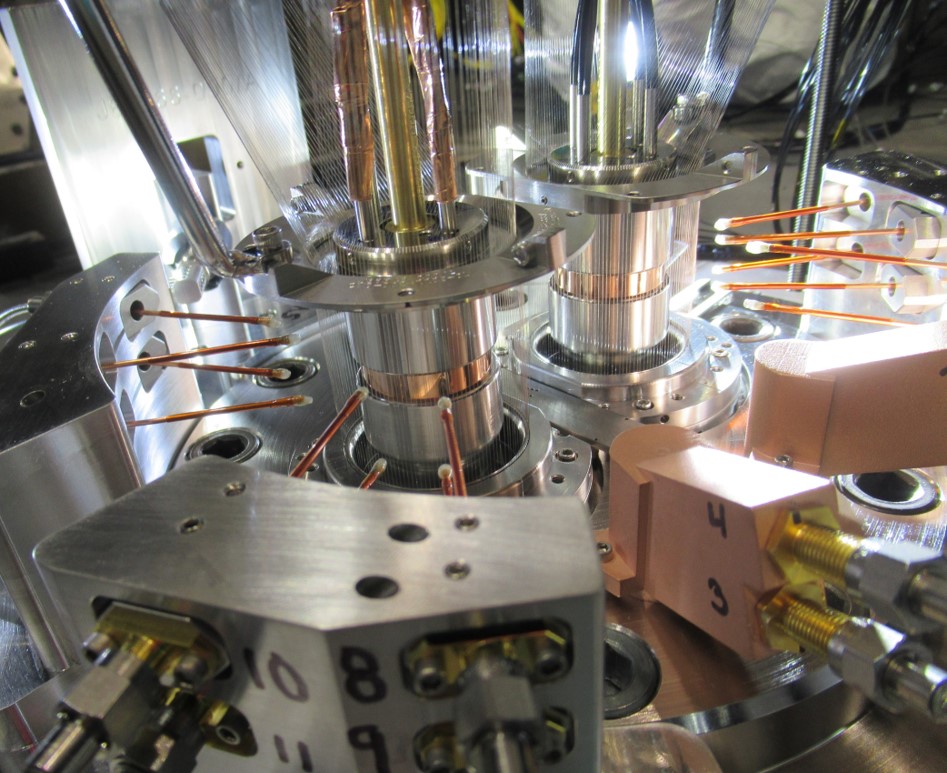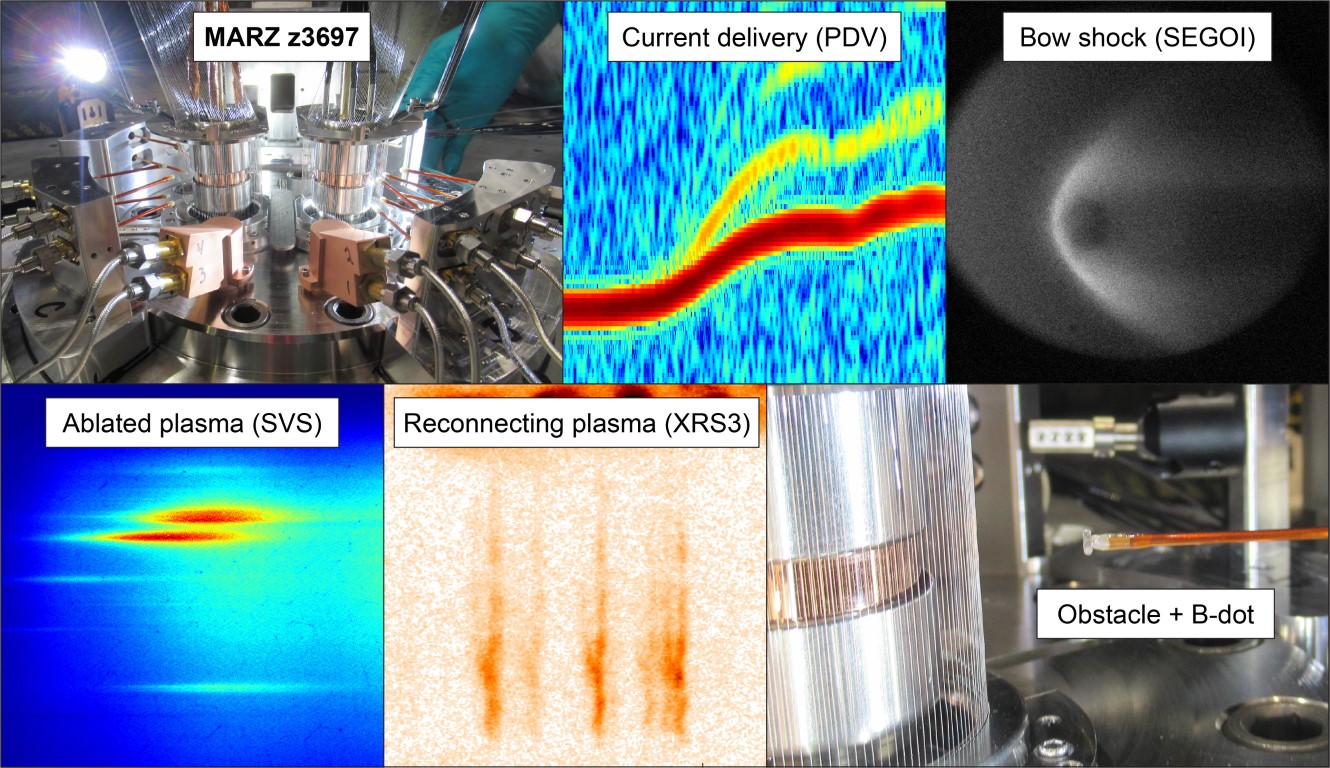MARZ: MAgnetic Reconnection on Z

A photograph of the MARZ load hardware in chamber. Courtesy of Sandia National Laboratories.
THE MARZ collaboration was founded in 2020 to investigated radiatively cooled magnetic reconnection using the world’s largest pulsed-power facility, the Z Machine at Sandia National Laboratories in Albuquerque NM. Radiative cooling is important process in extreme astrophysical plasmas such as the coronae surrounding black holes and in pulsar magnetospheres, but it is difficult to study in these remote environments. Z can deliver up to 30 MA of electrical current with 100 ns rise times. Under these intense conditions, extremes states of matter can be generated which exist nowhere else on Earth, enabling us to study the physics behind exotic astrophysical objects in the laboratory.
MARZ uses a scaled-up version of the magnetic reconnection platform developed by the team at the 1.4 MA MAGPIE generator at Imperial College London. We were awarded four shots through the Z Fundamental Science Program (ZFSP) in 2021-2023, and we carried out our first experimental shot on April 21st, 2022. In this shot we successfully demonstrated splitting of the power-flow on Z to drive two side-by-side inverse (or exploding) wire arrays. Diagnostics such as inductive probes, streaked spectroscopy, X-ray diodes and X-ray imaging spectroscopy confirmed the ablation of fast moving plasmas flows carrying large advected magnetic fields, and the generation of a reconnection layer between the wire arrays.

A summary of data from our first MARZ shot on Z. From top left: load hardware in chamber, spectrograph of PDV demonstrating current delivery to the load, a bow shock forming around an inductive probe, streaked visible spectra from the plasma flows, X-ray spectroscopy of the reconnection layer showing Al K-shell, a photo of the inductive probe used to form the bow shock. Courtesy of Sandia National Laboratories.
Our second and third shots in December 2022 built on this result and showed evidence for bright hotspots moving within the reconnection layer, consistent with the plasmoids seen in our 3D MHD simulations. Our fourth shot, scheduled for early 2024, will add new diagnostics such as laser imaging to further chracterize the reconnection layer.
We are grateful to Sandia National Laboratories for providing us with facility time on Z, and to the NSF for funding graduate student Rishabh Datta through NSF EAGER PHY2213898.
The MARZ collaboration consists of:
- Jack D. Hare, Academic Principal Investigator
- Katherine Chandler, Principal Experimenter, Sandia National Laboratories
- Jeremy Chittenden, Imperial College London
- Aidan Crilly, Imperial College London
- Rishabh Datta, Massachusetts Institute of Technology
- William Fox, Princeton Plasma Physics Laboratory
- Chris Jennings, Sandia National Laboratories
- Hantao Ji, Princeton University
- Carolyn Kuranz, University of Michigan
- Sergey V. Lebedev, Imperial College London
- Clayton E. Myers, Commonwealth Fusion Systems
- Dmitri A. Uzdensky, University of Colorado Boulder
Relevant Publications
- “Magnetic Reconnection with Radiative Cooling. I. Optically Thin Regime” by Dmitri Uzdensky and Jonathan McKinney. Basic theory of radiative cooling instabilities within a reconnection layer.
- “Radiative Magnetic Reconnection in Astrophysics.” by Dmitri Uzdensky. More effects of radiation on radiative cooling, as well as a detailed discussion of the astrophysical significance.